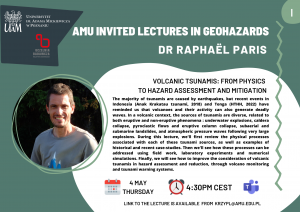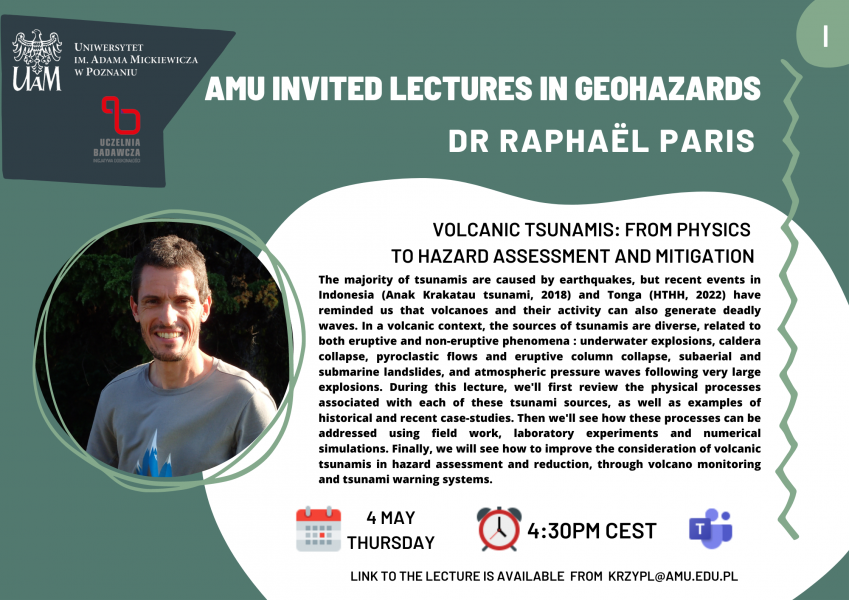Serdecznie zapraszamy do wzięcia udziału w wykładzie online pod tytułem “ Volcanic tsunamis: from physics to hazard assessment and mitigation”, który wygłosi dr Raphaël Paris (Université Clermont Auvergne, CNRS, IRD, OPGC, Laboratoire Magmas et Volcans, Clermont-Ferrand, Francja). Wykład stanowi część serii “AMU Invited Lecture Series in Geohazards I” organizowanej przez Uniwersytet im. Adama Mickiewicza w Poznaniu w ramach programu ID UB UAM. Wykład odbędzie się w czwartek (4 maja) o godzinie 16:30 na platformie MS Teams (link: https://t.ly/1Hgc ). Wykład i otwarta dyskusja po wykładzie będą w języku angielskim.
Informacja o wykładowcy i wykładzie:
Dr. Raphaël Paris is an author of over 80 papers (H=37) published in the best geoscientific journals (including Nature). His primary interests are volcanic tsunamis, tsunami deposits, ocean island evolution, flank instability, and coastal geomorphology. His expertise includes field surveys, coastal mapping, photogrammetry, and extensive novel applications of X-ray computed tomography. He was awarded with Plinius Medal of the European Geoscientific Union.
Abstract:
The majority of tsunamis are caused by earthquakes, but recent events in Indonesia (Anak Krakatau tsunami, 2018) and Tonga (HTHH, 2022) have reminded us that volcanoes and their activity can also generate deadly waves. In a volcanic context, the sources of tsunamis are diverse, related to both eruptive and non-eruptive phenomena : underwater explosions, caldera collapse, pyroclastic flows and eruptive column collapse, subaerial and submarine landslides, and atmospheric pressure waves following very large explosions. During this lecture, we'll first review the physical processes associated with each of these tsunami sources, as well as examples of historical and recent case-studies. Then we'll see how these processes can be addressed using field work, laboratory experiments and numerical simulations. Finally, we will see how to improve the consideration of volcanic tsunamis in hazard assessment and reduction, through volcano monitoring and tsunami warning systems.


